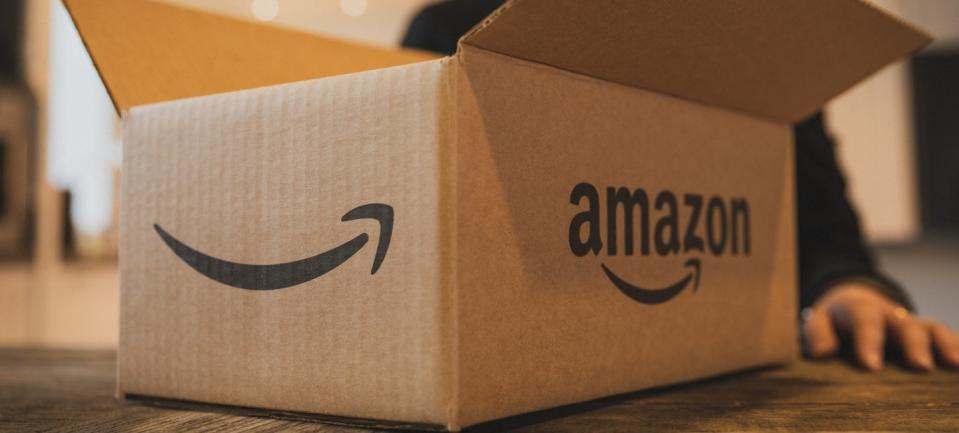Amazon Earnings Report: 3 Things I'll Be Watching
Almost no regular market event moves money like Amazon's (NASDAQ: AMZN) quarterly earnings report.
The tech giant now worth nearly $1 trillion is known for volatile share-price swings after its earnings come out. With its almost meaningless guidance and erratic profits, Amazon's stock often moves by double-digit percentages, adding or subtracting tens of billions of dollars from its valuation in a flash.
Amazon stock is already up 28% this year, which sets the stage for another big swing when the company reports first-quarter earnings after the market closes on Thursday. Here are three things worth keeping an eye on when it does.

Image source: Amazon.
1. Other revenue
Amazon's advertising business has developed into a key profit-growth driver over the last year as the company has grown into the third-biggest seller of digital advertising in the U.S., behind Google and Facebook. Amazon doesn't break out its ad revenue directly, but those sales do make up a significant majority of its "other revenue" category.
In 2018, Amazon recorded $10.1 billion in other revenue, up 95% from the year before, or more than double on a constant-currency basis. Digital advertising is a generally high-margin category, especially for tech giants like Amazon. Facebook, for example, has had an operating margin over 40% for much of its publicly traded history, a level of profitability virtually unheard of elsewhere in the corporate world. At Amazon, the company is leveraging its massive e-commerce platform to accelerate its entry into several more-profitable businesses, including advertising.
This is a key opportunity for the company. Another year-over-year doubling of income in its other revenue category would signal the power of its advertising business and its unique e-commerce assets. It would also likely add billions of dollars to the bottom line.
2. North American e-commerce operating margin
Amazon divides its operations into three major business segments: North America, international, and Amazon Web Services. The numbers from Amazon Web Services and international have become rather predictable. AWS, its cloud computing division, delivers impressive growth and huge profits regularly. International e-commerce, on the other hand, has long looked like a money pit, and posted a $2.1 billion operating loss last year.
However, North American e-commerce in recent years has transitioned from a near-breakeven business to a highly profitable one thanks to the growth of its third-party marketplace, the Amazon Prime program, and businesses like digital advertising. Last year, the division had an operating profit of $7.3 billion, up 156% from the year before, or 5.1% of revenue.
In Q1 2018, North American operating margin was just 3.7%. Increasing its profitability in its home region is likely the biggest driver of its overall profit growth, especially as revenue growth is slowing. Amazon also needs to expand its profit margins in order to justify its current triple-digit P/E valuation. Amazon investors should hope to see a healthy increase compared to the figure it posted a year ago.
3. Physical stores
After its 2017 acquisition of Whole Foods, Amazon began separately reporting sales from physical stores, which include Whole Foods and a small number of Amazon stores like AmazonBooks and Amazon 4-Star.
The fourth quarter was the first full lap of Amazon's Whole Foods ownership, and the company said on the earnings call that comparable sales at the organic grocery chain were up about 6% even though the number in the report was down due to a discrepancy in the two companies' reporting calendars.
Thursday's report should offer a clean comparison of physical-store revenues, and I'm curious to see how Whole Foods is progressing under Amazon. Investors should hope to see steady comparable sales growth, as Amazon has made efforts to drive traffic to Whole Foods stores by lowering prices on some items and offering discounts to Prime members.
Amazon spent $13.7 billion on Whole Foods, making it by far the biggest acquisition in its history. The results of its efforts to grow that supermarket chain and unlock greater profits will shed light on the prospects for its own grocery chain, which it plans to launch later this year. In addition, with Amazon's organic growth slowing, investors should expect acquisitions to play a greater role in the company's retail strategy. Improving results at Whole Foods would bode well for future acquisitions.
The big picture
Part of what makes Amazon so unique is the range of its business lines, which include diverse areas like Alexa, AWS, and even healthcare. However, advertising, Whole Foods, and its third-party marketplace will be key growth engines for the company in the near future. Though it will be the headline numbers that move the stock on earnings day, investors can gain deeper insights into the company's direction by focusing on the underlying categories above.
More From The Motley Fool
John Mackey, CEO of Whole Foods Market, an Amazon subsidiary, is a member of The Motley Fool's board of directors. Randi Zuckerberg, a former director of market development and spokeswoman for Facebook and sister to its CEO, Mark Zuckerberg, is a member of The Motley Fool's board of directors. Jeremy Bowman owns shares of Amazon and Facebook. The Motley Fool owns shares of and recommends Amazon and Facebook. The Motley Fool has a disclosure policy.

 Yahoo Finance
Yahoo Finance 